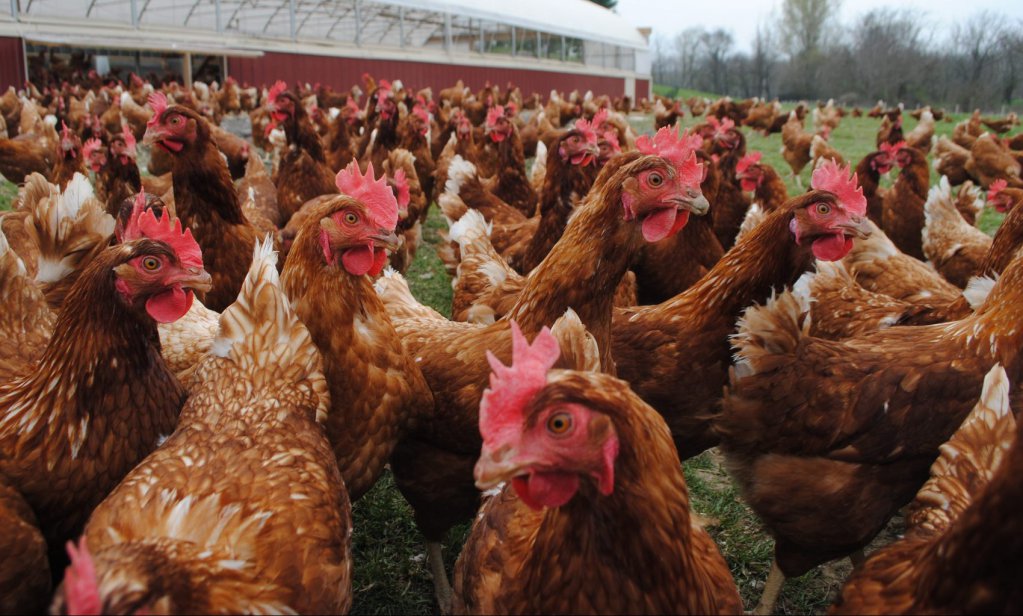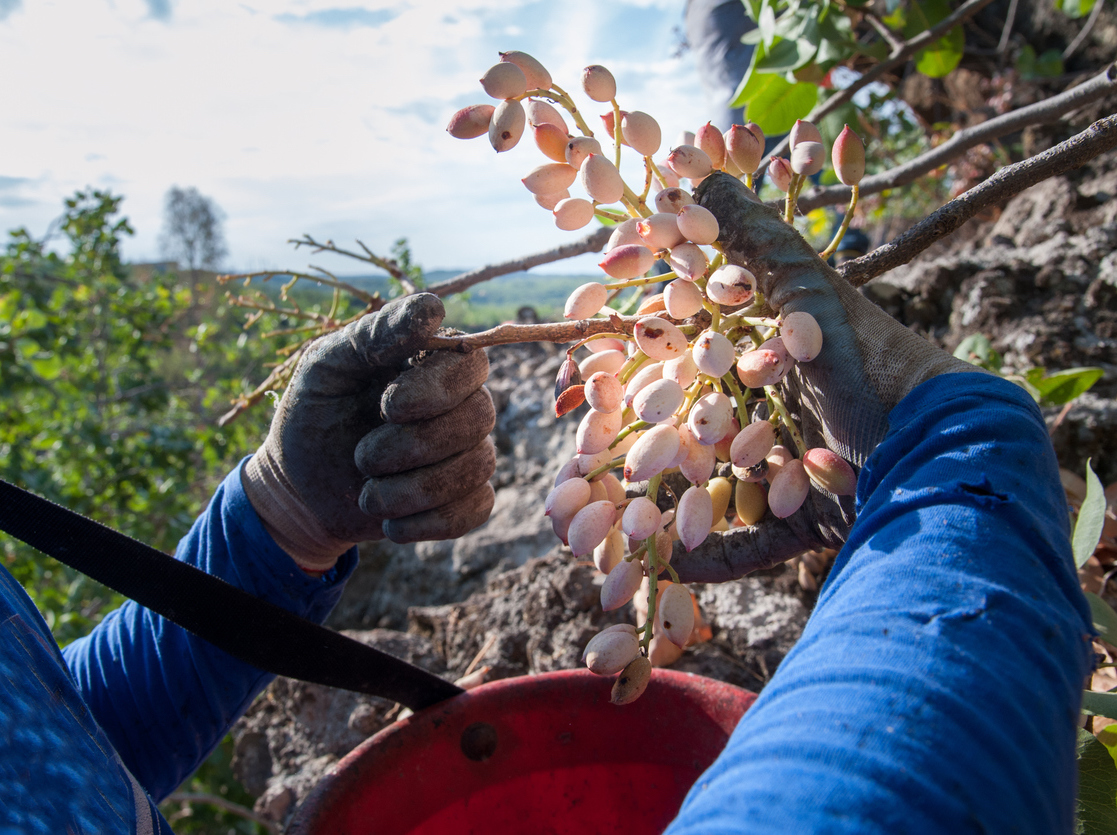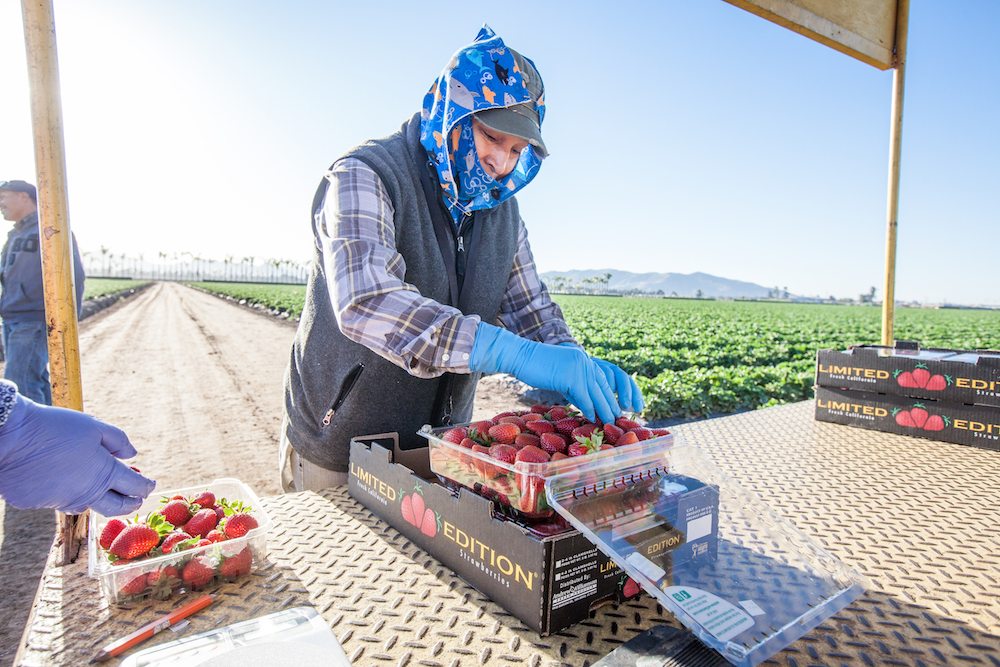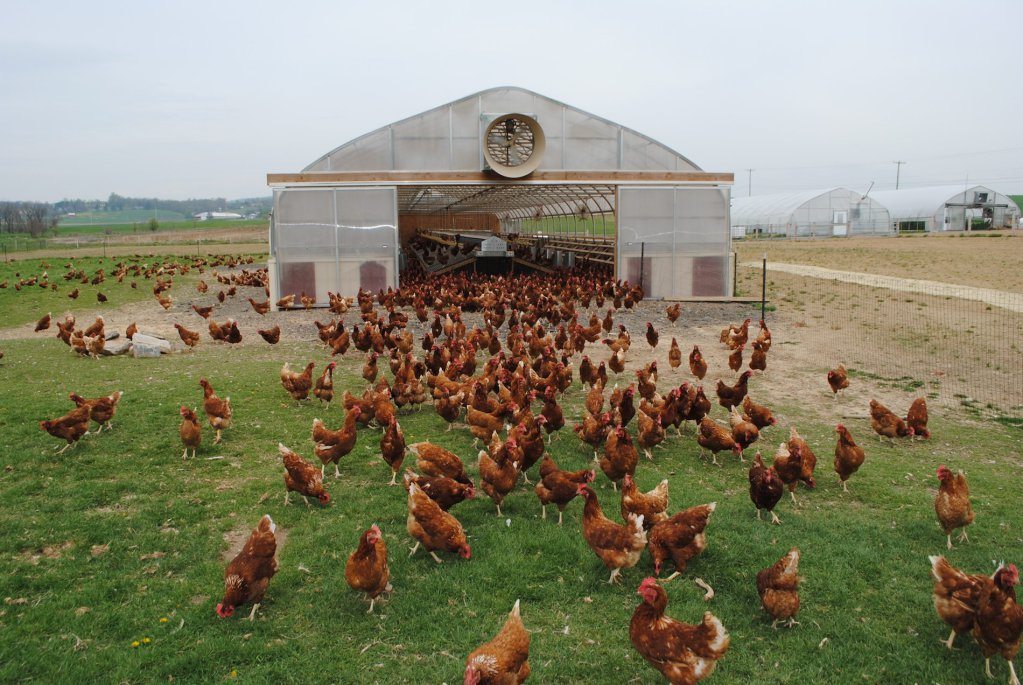
Joe Fassler
Everyone likes the sound of giving chickens meaningful outdoor access. But selling millions of eggs while keeping the barn doors open is harder than it sounds.
I. Super-sizing “pasture-raised”
California’s Proposition 2, a 2008 ballot measure banning the most extreme forms of livestock confinement within the state, says nothing about cages. It only requires that certain animals be allowed to “lie down, stand up, fully extend their limbs and turn around freely.” But the measure put chicken cages in the news, and that may have inadvertently sparked a cage-free revolution.
In September, 2015, nine months after the law went into full effect, McDonald’s made a watershed announcement: it pledged to overhaul its egg supply chain, committing to go 100 percent cage-free by 2025. Since then, similar pledges have become a corporate trend. The list of converts has grown to include large multinationals (Nestle, Unilever, General Mills), fast food chains (Burger King, Taco Bell, Wendy’s), and major retailers (Walmart, Target, Kroger). Denny’s even publicized its commitment in a commercial, “The Chicken Comes Before the Egg,” that featured hens pondering the unexpected gift of extra space. “We can do anything,” one lucky bird thinks out loud.
But arguments have been made that the changeover furthers an existing consumer misperception. “Cage-free” evokes happy hens in a verdant meadow, pecking at bugs, flapping their wings, enjoying the sun and air. In the past few months, numerous media outlets have pointed out that the emerging standards fall far short of the pastoral ideal. (See here, here, and here.) The vast majority of cage-free laying chickens—even the ones whose eggs are labeled “organic,” or “free-range”—are housed in giant, windowless warehouses with only nominal access to the outdoors, and often as little as a single square foot of space per bird.
So here’s the truth for consumers. The real-life pastoral ideal? It’s not available in most grocery stores, anyway. Why? Because the bugs-and-meadow model is really hard to scale. Farmers might be able to make it work with a few hundred hens—enough to supply farm stands, greenmarkets, maybe even local restaurants and a health food store or two. And many small-scale egg farmers don’t want to outgrow their local, less formal economy in the first place. Those who do tend to fail.
It looks romantic, but none of that matters to the chickens.
And yet, two companies have been quietly experimenting with how to scale and modernize an approach to egg production that your great-grandparents would have recognized. In a few short years, Austin-based Vital Farms, and Handsome Brook Farm, headquartered in upstate New York, have proven that you can open the barn doors and still sell millions of eggs. They’re no longer questioning whether great scale is compatible with the great outdoors. Now the question is whether their vision for “pasture-raised” will dethrone “cage-free.”
The original: Vital Farms
Though “cage-free” sounds old-timey, it’s a fairly recent phenomenon. In 2004, when Whole Foods Markets started declaring it would only sell “cage-free” eggs, it created demand for a product that didn’t exist in a literal sense. Call it putting the cage before the chicken. The term was misused, strictly speaking, but it was good enough to be a catalyst to direct attention to a real issue.
“When they put signs in all their stores, the most incredible thing was that it begged a question that people didn’t even know to ask,” says Matt O’Hayer, founder and CEO of Vital Farms. “What the hell’s a cage? Chickens live in cages? It was shocking to the consumer to even see that announcement.”

The Counter
Two years later, O’Hayer and his wife, Catherine Stewart, decided they’d try to start a farm that tapped into growing consumer interest in the daily lives of hens. They started with 20 pastured Rhode Island Reds and, with the help of sales at farmers’ markets and to local restaurants, scaled to a flock of several hundred. Vital was quickly discovered by Whole Foods foragers, eventually landing a contract with the chain’s Midwest region toward the end of 2008.
“Sometimes we were still washing eggs by hand when the truck pulled up because we were short,” O’Hayer says. “We’d get the truck driver a cup of coffee, and run out to the pasture to see if we could grab the last 30 eggs we needed to finish up the order.”
Vital Farms used the mobile chicken coops popularized by closed-loop farmer Joel Salatin, whose model was portrayed by Michael Pollan in The Omnivore’s Dilemma. Small henhouses are pulled around the field by tractor, ensuring that no part of the pasture gets overgrazed (or over-fertilized with manure). This approach was never meant to support commercial-scale egg production. It was intended to support integrated farming: chickens earn their keep by pecking apart cow patties, eating harmful cattle parasites, and helping to fertilize the grass cattle herds live on. The eggs are just a bonus.
When egg production is the point, the shortcomings become obvious. The units are heavy, and dragging them by tractor is hard on the pasture. Chickens like to lay their eggs under the coops, where they’re hard to collect. The mobile units are tough to heat and cool, leaving flocks vulnerable to weather. They’re also difficult to light—commercial scale facilities use artificial light to mimic endless summer, so that hens won’t notice the shorter days of winter and stop laying. Then there’s the fact that the chickens are more exposed to roving predators like owls and foxes. Free-roaming hens might look good, but the fact is that sometimes they’re going to get eaten.
“Probably every producer I’ve talked to has mentioned [predation] as a major challenge,” says Richard Blatchford, a specialist in poultry production at the University of California. Many smaller farms he’s studied routinely lose up to one-third of their birds this way. Even minor losses can spook the flock, causing production to plummet.
The better model came about almost by chance. In 2009, with demand growing from Whole Foods, Vital Farms partnered with an Arkansas farmer who already had a chicken barn and was skeptical of the mobile units. He and O’Hayer settled on a new “spoke and wheel” approach. Instead of rotating the coops, they kept the barn stationary and rotated the grass.
It works like this: A single barn large enough for 2,500 to 5,000 chickens sits in the middle of a pasture. For every 1,000 birds, there’s two-and-a-half acres of open space—or roughly 108 square feet per hen, the European standard for eggs labeled “free-range organic.” Recently grazed portions of the field are fenced off. (60 days is enough time for the grass to grow back and any parasites in the chicken manure to die.) This means that when Vital Farms hens leave the barn each morning, every bird has access to about 25 square feet of fresh pasture. The barns are built to USDA standards and are easy to heat, cool, and seal against predators.
“Our first barn doubled our production overnight. And our third barn probably tripled it,” O’Hayer says. “Mortality just fell through the floor, and lay rates went way up.”
In time, O’Hayer says, production rates came close to the levels seen in conventional facilities (between 7.8 and 9.5 eggs per hen every 10 days.) And so Vital Farms started to find others to contract with, one barn at a time—mostly Amish and Mennonite farmers, who are experienced with animals, are interested in lower-tech methods, and quickly spread news about a good opportunity by word of mouth.
In 2012, Inc. magazine called Vital Farms the fastest-growing food business in the United States. In 2013, it came in second. Today, the company contracts with a network of about 100 farms in states below the Mason-Dixon line, where warmer temperatures make year-round outdoor access possible. That adds up to more than 1.5 million eggs a week, according to the Washington Post—sold in more than 5,000 stores and counting, not just Whole Foods but Kroger, Costco, Safeway, and other more affordably-priced chains.
Eventually, Vital Farms stopped allowing partners to use the mobile coop approach.
“It sounds good, it looks good, it looks romantic, but none of that matters to the chickens,” he says. “What matters to the chickens is how safe they are, and we found we cannot properly take care of them with the mobile units.”
The vertical integrator: Handsome Brook Farm
Since O’Hayer got into the egg business, a new player has entered the pasture-raised market–and it’s thinking just as big. Handsome Brook Farm’s vertically-integrated adaptation of the familiar wheel-and-spoke approach includes centralized infrastructure and a more hands-on relationship with producers. It’s a strategy the company says creates new opportunities, efficiencies, and economies of scale.
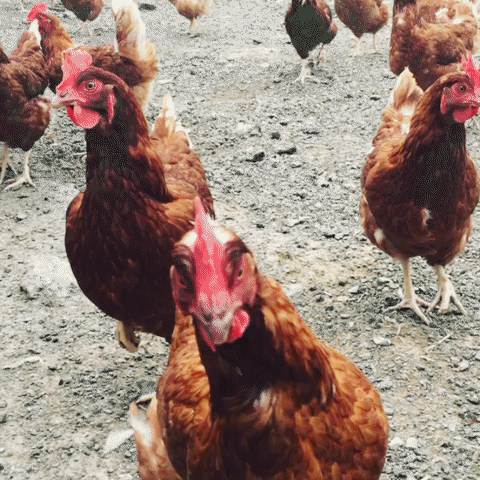
Joe Fassler
Pasture-raised chickens at Handsome Brook Farm
In 2007, two MBAs, Betsy and Bryan Babcock, sold their healthcare business and retired to a B & B in upstate Franklin, New York. They encouraged guests to collect their own breakfast eggs from six backyard chickens, and the results were such a hit that they began to suspect they’d stumbled on a business opportunity. They scaled up their flock to 20 hens and made weekly deliveries to the Hannaford Brothers grocery in nearby Oneonta. “We made a label and we called it ‘pasture-raised,’ Betsy says. “We thought if we sold 12 dozen a week, we were doing really well.”
Soon they were selling 100 dozen a week through several Hannaford stores, supplementing their own production with eggs from friends and neighbors with backyard coops.
Then came the call from Fresh Direct, one of the east coast’s major online grocers.
“For us, that was a big leap in volume,” Babcock explains. “One hundred dozen a week, versus 1,000 dozen a week, is a very different scale.”
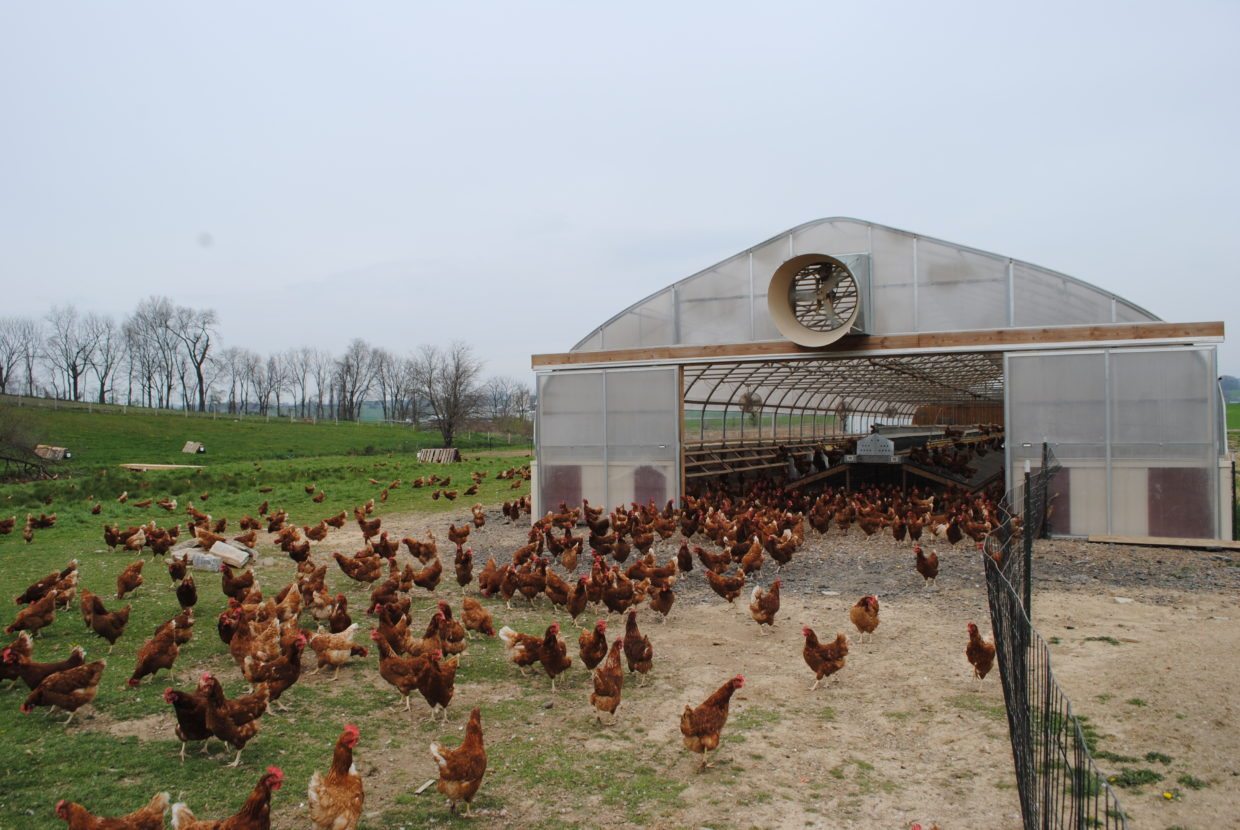
Hens rove outside the barn at a Handsome Brook Farm operation
Joe Fassler
Handsome Brook gravitated to the same approach developed by Vital Farms. But the Babcocks decided to be deeply involved in their network of supplier farms, providing them with strategic oversight, supplies, and distribution. The result has been a rapid, nationwide expansion over the course of just three years. Handsome Brook is currently in 5,000 stores in 41 states; the company has scaled from 25 farms in 2015 to about 75 today, with operations in New York, North Carolina, Virginia, Maryland, Pennsylvania, and Kentucky. Babcock projects that she’ll have contracts with 200 farms by the end of the year. She thinks the rapid growth is a sign that, ultimately, “pasture-raised” is going to be the new “cage-free.”
At the same time, Handsome Brook is actively working to lower costs by centralizing infrastructure, starting with the company-owned feed mill, which allows Handsome Brook to buy grain in 20,000 ton shipments. It pays in advance for the whole year at a hefty discount. That adds up to major savings for Handsome Brook farmers, whose competitors pay full price on the spot market, plus added delivery charges.
“Their line is: ‘chickens don’t like to go outdoors.’ Well, that’s hooey.”
In the early days, when Handsome Brook was buying commercial feed, the birds weren’t doing as well as expected. Babcock says it’s because feed tends to be filled with cheap corn, which makes the birds gain too much weight. Handsome Brook makes a proprietary feed in 30 different “rations,” blending corn, soy, grain, and alfalfa, giving farmers a way to respond to the health needs of their flock.
And Handsome Brook employs a director of live operations, who oversees two veterinarians and a team of four full-time field technicians who inspect partner farms, checking bird health, housing conditions, cleanliness, water consumption, and production.
The next step toward total integration is coming soon: a hatchery. “We strongly believe that control over the pullet raising process is essential to insure quality, animal welfare, and productivity,” Babcock says, in an e-mail. The company is also building its own packing facility in Virginia, which it projects will result in major savings, for both Handsome Brook and its farmers.
“When we came into being, the large commercial producers—the Eggland’s Bests and the Organic Valleys—sort of laughed it off,” she says. “They said, ‘This is a fad, no one’s going to do it.’ Their line is: chickens don’t like to go outdoors. Well, that’s hooey.”
II. Pasture-raised vs. the pastoral ideal
What does commercial-scale pasture-raised actually look like in practice? In April, I drove out to one of the Handsome Brook partner farms in Lititz, Pennsylvania to see for myself.
The operation is so small that I drive past it by mistake. As I double back, a man waves to me from the driveway. It’s Broc Turner, Handsome Brook’s director of live operations. He’s a poultry expert who worked for Perdue Chicken for many years and, for a time, was personal assistant to Frank himself. Turner says he never thought putting hens outside was possible, but now he wouldn’t go back.
We put on hairnets and fasten big plastic socks around our boots. Then we walk out back.
The barn is a converted hoop house, the kind typically used for growing vegetables. Turner says that the farmer built it that way so that, if chickens didn’t work out, he could go back to growing produce. We pass through the front door into a small packing room where several hundred eggs are stacked in packing crates next to a large sorting machine, then into the large room where the birds have spent the night.

Joe Fassler
I hear them first: an endless ocean of gobbles and coos. And then I’m faced with 2,500 brown chickens. For a minute I stand there, awed. It’s visually overwhelming to witness so many identical creatures, all Hyline/ISA Brown crosses, all with the same bright red comb, looking at me with the same yellow eyes. To walk through the barn is to part a shallow, brown sea. Their bodies dodge gently away from our feet with each step.
The birds hop up and down from raised perches, where six additional square inches of space are allotted per bird. The perches lead to rows of nesting boxes, and the eggs drop down onto a long, hidden conveyor belt. The hens certainly aren’t confined. They have plenty of space to move around. But especially around the feeders, it’s a little like the chicken equivalent of maneuvering through a crowded subway car at rush hour.
Joe Fassler
The hens don’t look distressed, either. Their coats are glossy. The barn is well-lit and ventilated, and the air is pleasant to breathe. I’ve stood outside conventional laying barns where the stench of animals and ammonia can make your eyes water. Turner says the Handsome Brook houses have a mortality rate of less than 1 percent, far lower than the 5 to 10 percent you see in conventional houses. Still, the sheer number of birds provokes a visceral, gut-level response: It feels commercial-scale. You start to sense the enormous effort it takes to stock all those grocery store shelves. But industrial? Not exactly. There’s something going on here that’s different. It’s big and busy and efficient without feeling inhumane.

Joe Fassler
And it’s just for the night. Every morning at 11, the hens go out.
The company’s commitment to providing daily outdoor access is, of course, its mission and main selling point—though we don’t just have to take their word for it. In order to stay American Humane Certified for a pasture-raised product, each farm undergoes an annual inspection to ensure birds have 108 square feet of pasture apiece. I’m not present to see the doors roll open, but I come back in the afternoon to see what that looks like.
Large portions of the flock hesitate in the entryways, seemingly not sure whether they want to leave the safety of the barn, the water, and the feed. As I walk through the field, the hens follow me through the meadow and peck inquisitively at my boots. I notice their beaks are nicked at the end; they have been clipped early in life, the mark of a commercial-grade hen. But it does seem nice to be a Handsome Brook chicken. The pasture is lush and green and there is more than enough space. The birds wander all over, pecking through the grass. There’s even a brook running through it, with a little wooden bridge. It looks, actually, like something you’d see on the front of an egg carton.
When applied to eggs, the label terms “organic,” “cage-free” and “free-range” cynically evoke a pastoral vision that masks an uncomfortable truth. At the farm in Lititz, at least, the marketing and reality seem far less dissonant. That’s not to say the “pasture-raised” label tells the full story. Vital Farms and Handsome Brook use routine industry practices I suspect many consumers would find objectionable, if they only knew: their chicks come from suppliers that mass cull the males; they trim the hens’ beaks; they sell spent hens for meat after a brief life. But can you blame producers for the confusion?
 Joe Fassler
Joe Fassler Until people understand that scale means tradeoffs, that convenience and affordability come with costs of a different sort, they’ll always be willingly misled.
The question, then, isn’t whether Handsome Brook farms look like Little House on the Prairie. The question is which tradeoffs can you live with? I’m standing in a pasture with several hundred basically happy hens. It seems like a luxury to be able to buy a dozen of these eggs for around six bucks at a Costco. Maybe that’s good enough.



